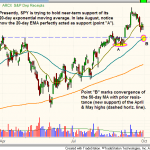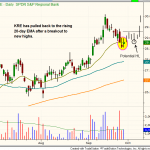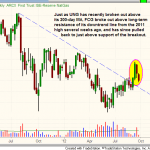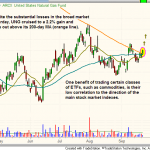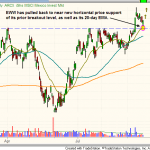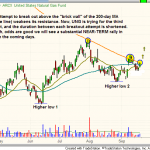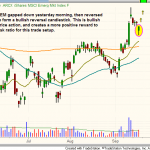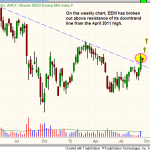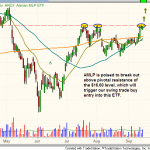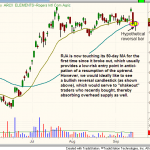As we enter the last quarter of 2012, let’s take an updated look at the technical daily chart pattern of the S&P 500 SPDR ($SPY), a popular ETF proxy for the benchmark S&P 500 Index. As annotated on the daily chart above, notice that $SPY is presently trying to cling to near-term support of its 20-day exponential moving average (the beige line). In a strong uptrend, this moving average often acts perfectly as support for enabling an index, ETF, or stock to resume its uptrend (assuming a firm uptrend is already in place). As an example of this, notice how the 20-day exponential moving average perfectly acted as support in late August (point “A”). As such, we will be looking for signs of whether or not SPY holds near its current price and starts to head back up in the coming days.
